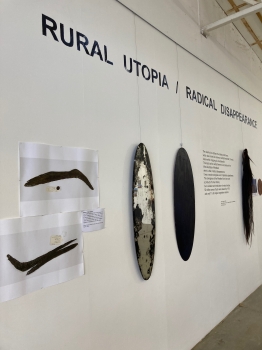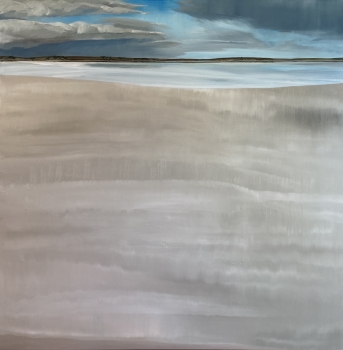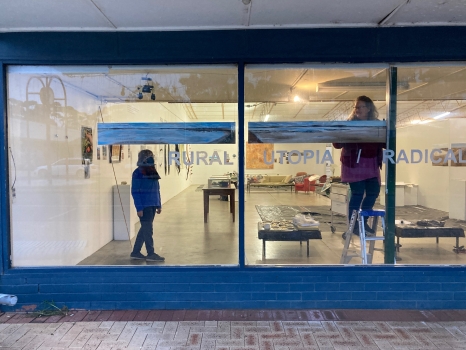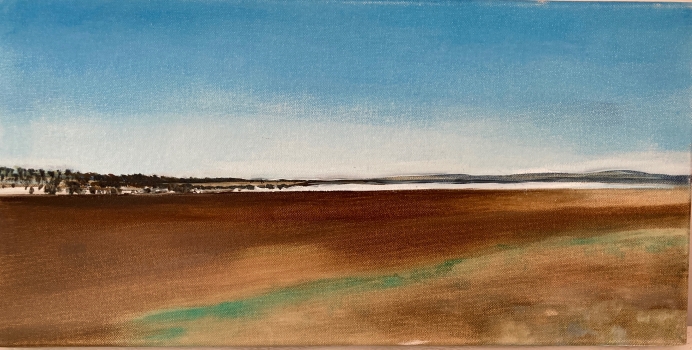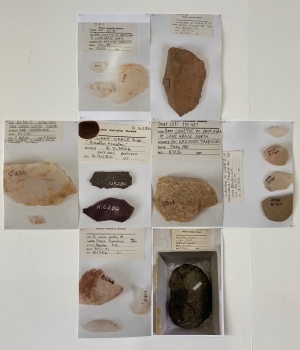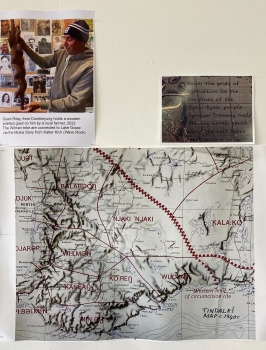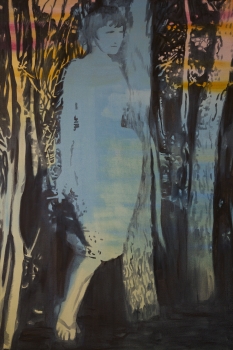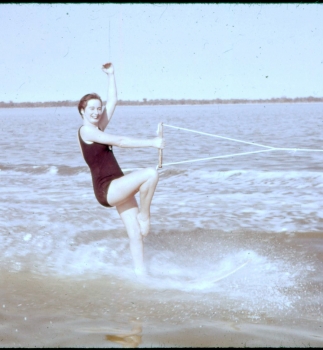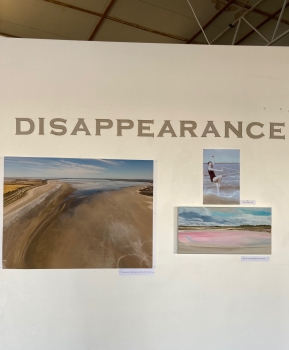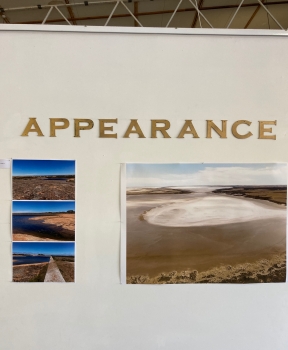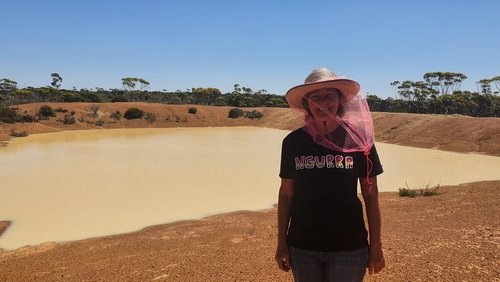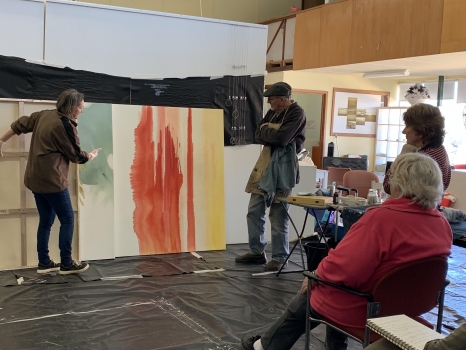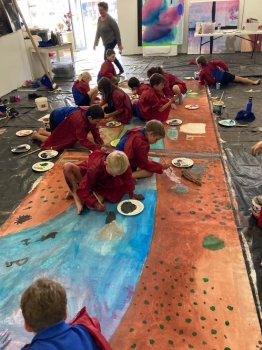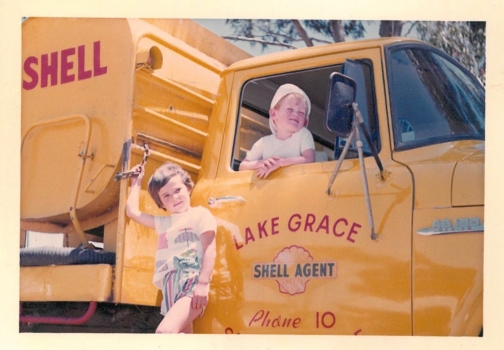Spaced 4- Lake Grace Artist Residency 2021/ 2022
Rural Utopias, Lake Grace Residency
I spent the first ten years of my life in Lake Grace (1961-1970) but had not been back since I left- so this residency was an opportunity to personally reconnect with the landscape of my childhood and with people in the area who remembered my parents, and me, as a child. It is also a reckoning of sorts- how did the landscape and culture shape my life?
Stage 1: In the first stage of my residency (September-Nov 2021) I was re-introduced to the general community through the amazing women that run the Lake Grace Regional Art Space- Tania Spencer and Kerrie Argent, both Curtin Uni Art graduates who bought and set up a large gallery/studio in what was the old 4-Square supermarket, in the main street. This space supports professional visual arts practice throughout the Wheatbelt. Artist and curator Michele Slarke, was also my mentor for this project, and took me on walks to view the spectacular wildflowers on various remnant pieces of bush that have been saved from farming/clearing. The population of the town has decreased since the ‘60s. During this stage I held 3 weekend painting workshops with 14 participants from the local area (names below).
Stage 2: After 4 weeks in Lake Grace on the second stage (June /July 2022) of my Spaced 4 Residency I opened an exhibition Rural Utopia/Radical Disappearance that included artworks by myself and others, personal souvenirs and found objects loaned by community members and documents and quotes from others who worked with me to explore the question ‘what has disappeared or is disappearing from Lake Grace?’
I started this process by displaying a text taken from the book Like Nothing Else on this Earth - a Literary History of the Wheatbelt (2017), by Tony Hughes d’Aeth, which explored the radical change in the landscape of the Wheatbelt - 50 million acres of bush were cleared by 1970 and only 7% of original vegetation remains.
As a child growing up in Lake Grace I had been told that “no Aboriginals lived in the place, they only moved through because there wasn't enough freshwater”. As an adult I knew that the disappearance of Aboriginal history needed to be questioned and so I started by presenting research about the Aboriginal history of the area:
I asked the WA Museum to see any artefacts from the Lake Grace area- and to be able to take photographs back – of these artefacts, to the Lake Grace community. The Museum staff were very generous in their support of this idea and put me in contact with Grant Riley from the Wuddi Cultural centre in Dumbleyung. I was also given a photo of Tindales map of the south-west, showing Aboriginal tribal areas- and this really opened up debate in the community. The map showed that 5 or 6 tribal groups are connected to the Lake Grace area: Wilmen (Dumbleyung), Balladong (Kellerberin), Njaki-njaki (Hyden, Kondinin), Koreng (Gnowangerup), and possibly Wudjari (Esperance).Grant Riley, who was a Wilmen man agreed to give a ‘welcome to country’ and open the exhibition with a talk about the Mulka story, which connects Hyden/Wave Rock with Lake Grace and Dumbleyung. This was the first time a member of the Wilmen tribe had been asked to visit Lake Grace for such a purpose.
I also asked people in town if they remembered any Aboriginal people living there. That's when important information began to be shared. Someone remembered the name Mary Penny and through artist Andrea Williams, who acts as her family custodian, I soon learned that the Williams and Penny sides of her family came from the area to the south of lake Grace around Lake Chinocup. Andrea kindly shared her family story and photos in the exhibition.
A farmer Greg Argent, brought in stone tools, found on his farm and agreed to display them in the exhibition. This ‘evidence’ was a fantastic addition- and encouraged other farmers in the district to disclose what they had found to show the evidence of human visitation/habitation on their land over hundreds of years. Another farmer told me how he had ploughed up a field of ‘yams’ (youlk’s). These native tubers were very important as a food source and again evidence of cultivation by Aboriginal people. Sadly the farmer couldn't find any evidence of any growing in the area anymore. I also sourced Menna (Gum Arabic), which grows locally (the locale was shown to me by 93 year old Phyllis Dunham) which I offered to visitors to eat- it is known as kind of chewing gum. Landgate supplied aerial maps which showed registered Aboriginal sites in the Lake Grace area and I was taken out by Arthur Slarke, a retired farmer from one of the first settler families, to locate archaeological sites, which were shown on the landgate maps. We also visited a ‘sanctuary’ freshwater lake and some soaks.
I held a workshop with children in yr 3/4- Miss McIvors class. I showed the children Quondongs and Sandalwood seeds and we discussed how they were bush food and how Aboriginal people would use special stone tools with a hole in them to crack open the seed to eat the nutritious nut inside. We also discussed ‘clearing’ and the effect on the local environment and animals. I had provided photos of local Phascogales and Honey possums (dead and from someone’s freezer) and a dried Blue Tongue lizard and burnt snake and feathers from a Wedge Tail Eagle. The children were asked to draw whichever of these they wanted and the drawings were added to the exhibition.
In conversations with the Spencers and others in the community - clearly the need to redefine a relationship with Aboriginal culture and history is something to be negotiated in Lake Grace. Hopefully the information displayed in the exhibition (both documentary historical material and artistic interpretations) will support this discussion and open up a dialogue. Grant Rileys’ participation in the opening of the exhibition and future liaison will be crucial to the success of this project. He has already stated that the next step would be to have a smoking ceremony in the heart of the town.
The exhibition continued for 2 weeks at the Lake Grace Regional Art Space-18 June - 3 July
The first oil painting I ever made was a portrait of my mother in Lake Grace when I was 8. Mum came home with the oil paints she had bought to do a class and I begged her to let me have a go. She sat for 2 hours in one of those Featherston canvas chairs-in the back yard- and I was hooked and that's when I knew what I wanted to do more than anything else. That experience had such a huge impact on the course of my life as an artist.
You can follow me on insta #jodarbs #lakegraceresidency
Painting participants: Lake Grace (7) Kerrie Argent, Jayne-Maree Argent, Tania Spencer, Anna Strevett, Judith A Stewart, Paula McIver, Genevieve Curtin, Newdegate (1): Melissa Cugley, Narrogin (3): Karen Keeley, Ned Crossley, Barbara Fletcher, Dumbleyung (1): Kerry Scally, Wagin (1): Joyce Contos.
Read more https://www.spaced.org.au/spaced-latest/rural-utopias-residency-jo-darbyshire-in-lake-grace-3
on the Spaced WEBSITE
This project was commissioned by International Art Space as a part of the spaced 4: rural utopias program
SPACED 4: RURAL UTOPIAS
Spaced 4: rural utopias is a program centred on an artists’ exchange between international and Australian visual artists with regional and remote West Australian communities. The program will span three years (2019-21) and constitute the core of the fourth iteration of spaced, a recurring international program of context-responsive art, presented by International Art Space (IAS) https://www.facebook.com/spacedias/
@spaced_IAS https://twitter.com/spaced_IAS
@spaced_ias https://www.instagram.com/spaced_ias/
https://www.youtube.com/user/spacedIASKA
